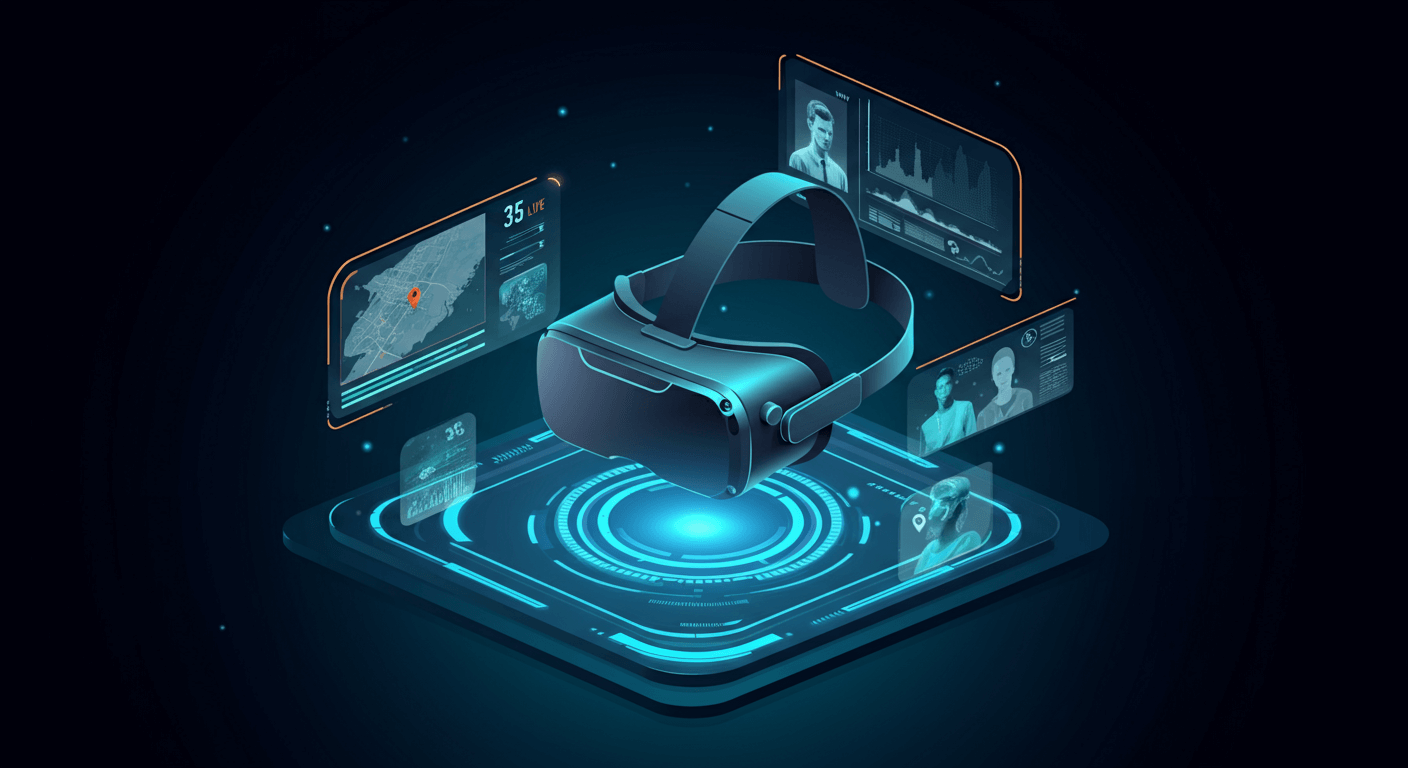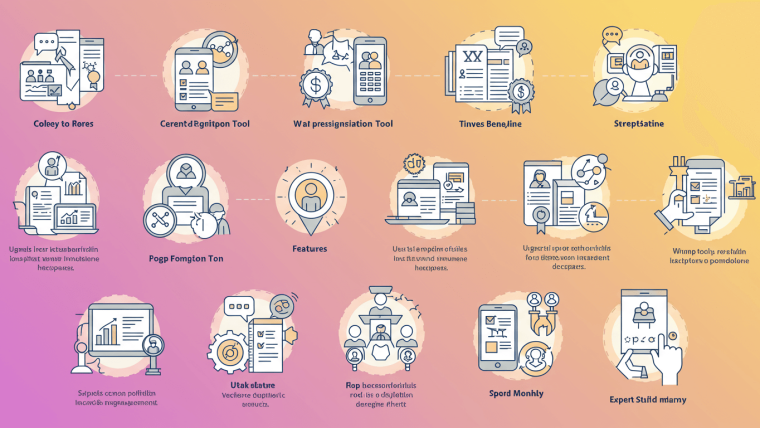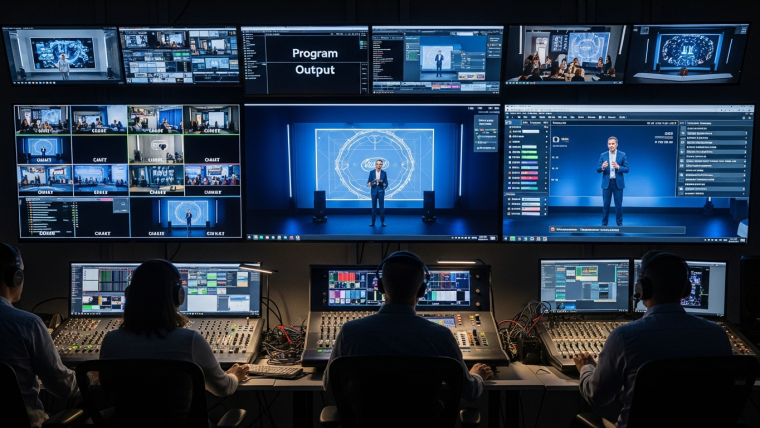The events industry has undergone a massive transformation over the past few years. Virtual reality technology, once confined to gaming and entertainment, now plays a crucial role in creating immersive experiences that captivate audiences and deliver memorable moments. From corporate conferences to product launches, VR is reshaping how we think about event engagement and attendee interaction.
What is Virtual Reality in Events?

Virtual reality in events refers to the use of immersive digital technology to create simulated environments that attendees can explore and interact with. Unlike traditional video presentations or static displays, VR places users directly inside a three-dimensional digital space where they can move around, manipulate objects, and engage with content in ways that feel natural and intuitive.
Event VR experiences typically require specialized equipment such as VR headsets, controllers, and sometimes haptic feedback devices. The technology creates a sense of presence that makes users feel as though they’re actually in the virtual environment, rather than simply observing it from the outside.
Types of Virtual Reality Events
Virtual Conferences and Meetings
Virtual conferences have become increasingly sophisticated, moving beyond basic video calls to fully immersive environments. Attendees can navigate virtual conference halls, visit exhibition booths, and participate in networking sessions that closely mimic real-world interactions. These platforms often include features like spatial audio, where conversations become quieter as you move away from other attendees, creating a more natural communication experience.
Hybrid Events
Hybrid events combine in-person and virtual elements, allowing remote participants to feel more connected to the live experience. VR technology can transport virtual attendees into the actual event space, giving them the ability to explore the venue, view presentations from multiple angles, and interact with both physical and virtual participants.
Product Launches and Demonstrations
Companies are using VR to showcase products in ways that weren’t previously possible. Attendees can examine complex machinery from the inside, experience products in different environments, or see demonstrations that would be dangerous, expensive, or impossible to recreate in real life. This is particularly valuable for industries like automotive, construction, and technology.
Training and Educational Events
VR provides a safe environment for hands-on learning experiences. Medical professionals can practice procedures, construction workers can learn safety protocols, and employees can receive training in realistic scenarios without real-world risks or costs.
Key Benefits of VR in Events
Enhanced Engagement and Immersion
Traditional events often struggle with attendee engagement, especially during presentations or product demonstrations. VR solves this problem by making every participant an active participant rather than a passive observer. The immersive nature of virtual reality naturally captures and holds attention, leading to better information retention and more meaningful interactions.
Cost-Effective Solutions
While the initial investment in VR technology can be significant, it often reduces overall event costs. Virtual events eliminate venue rental fees, catering expenses, and travel costs for both organizers and attendees. For recurring events or training sessions, VR can provide substantial long-term savings.
Global Accessibility
VR removes geographical barriers, allowing organizations to reach global audiences without the logistical challenges of international travel. This accessibility opens up new opportunities for participation from individuals who might not have been able to attend traditional in-person events.
Data Collection and Analytics
Virtual reality platforms provide detailed analytics about user behavior and engagement. Event organizers can track which areas of a virtual space receive the most attention, how long attendees spend at different stations, and which content generates the most interaction. This data helps optimize future events and demonstrates clear ROI to stakeholders.
Memorable Experiences
The novelty and immersive nature of VR creates lasting impressions that traditional events often struggle to achieve. Attendees are more likely to remember and share unique VR experiences, extending the reach and impact of your event beyond the initial participants.
Real-World Applications and Examples
Trade Shows and Exhibitions
Virtual trade shows allow exhibitors to create elaborate displays without the physical limitations of traditional booth space. Companies can build multi-story virtual showrooms, transport visitors to different locations, or demonstrate products in their intended environments. Attendees can visit dozens of booths in a single session without the fatigue associated with walking miles of convention center floors.
Corporate Training Events
Organizations are using VR to conduct employee training that would be difficult or dangerous to replicate in real life. Oil companies train workers on offshore rig procedures, airlines prepare flight crews for emergency situations, and retail chains onboard new employees in simulated store environments.
Entertainment and Cultural Events
Museums and cultural institutions use VR to transport visitors to historical locations, allow exploration of ancient sites, or provide behind-the-scenes access to artistic processes. Music venues create virtual concert experiences that can accommodate unlimited audiences while maintaining intimate performer-audience connections.
Medical and Scientific Conferences
Healthcare professionals can attend virtual surgery demonstrations, explore 3D anatomical models, and participate in collaborative diagnosis sessions. Research conferences use VR to visualize complex data sets and allow attendees to literally walk through scientific models and simulations.
Implementation Challenges and Solutions

Technology Requirements
Successful VR events require reliable hardware, stable internet connections, and user-friendly interfaces. Event organizers must consider equipment costs, technical support needs, and backup plans for technology failures. Partnering with experienced VR technology providers can help navigate these challenges.
User Adoption and Comfort
Not all attendees are comfortable with new technology, and some may experience motion sickness or disorientation in VR environments. Providing clear instructions, offering practice sessions, and designing comfortable experiences with minimal motion can help ensure broader adoption.
Content Creation Costs
Developing high-quality VR content requires specialized skills and can be expensive. However, the investment often pays off through increased engagement, repeatability of the content, and the ability to reach larger audiences.
The Future of VR Events
The events industry continues to innovate with VR technology. Emerging developments include more sophisticated haptic feedback systems that allow users to feel textures and objects, improved graphics that approach photorealistic quality, and artificial intelligence that can create personalized experiences for each attendee.
As VR hardware becomes more affordable and user-friendly, we can expect to see increased adoption across all types of events. The technology is moving toward truly seamless experiences where the line between virtual and reality becomes increasingly blurred.
Getting Started with Virtual Reality Events
Organizations interested in incorporating VR into their events should start by identifying specific goals and use cases. Consider partnering with experienced VR development companies, invest in proper planning and user testing, and always have technical support available during live events.
Virtual reality represents a fundamental shift in how we think about events and attendee engagement. By embracing this technology thoughtfully and strategically, event organizers can create experiences that are more engaging, accessible, and memorable than ever before. The future of events is virtual, and the possibilities are limited only by our imagination.








Webinar Analytics: A Complete Guide to Measuring Success and Improving Performance
The Ultimate Webinar Follow-Up Strategy to Turn Attendees into Customers
Webinar Accessibility Best Practices: How to Make Your Online Events Inclusive for All
Webinar Personalization: Tailoring Content to Audience Segments for Maximum Engagement